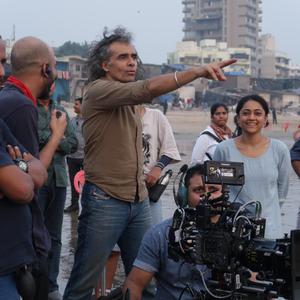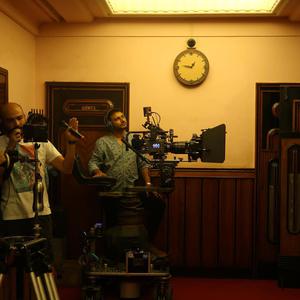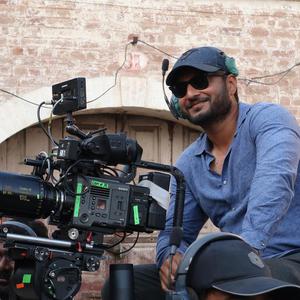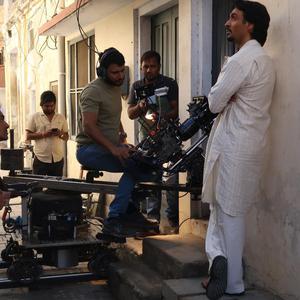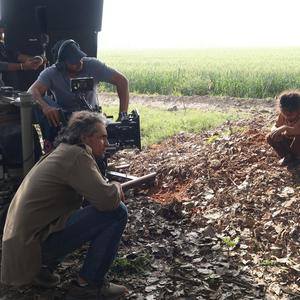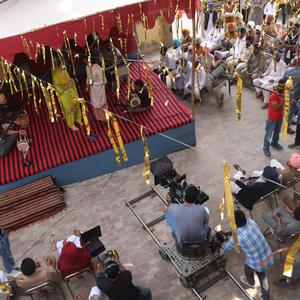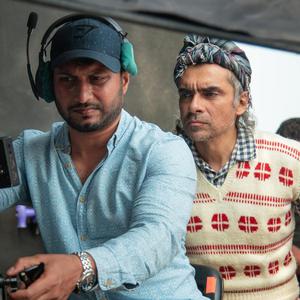





The biographical drama film “Amar Singh Chamkila” has won praise from critics for its insightful and atoning depiction of the life of the singer. Imtiaz Ali is the director, producer, and co-writer of the movie, which features Diljit Dosanjh in the lead role and Parineeti Chopra as Amarjot, his wife.
The highly regarded movie “Amar Singh Chamkila” provides a contemplative look into the life of the well-known singer, supported by powerful acting, creative camera work, and striking cinematography. Critics have complimented the film’s overall excellence, pointing out its symphonic narrative of survival, humiliation, and social standing. It has been called a masterfully composed tribute to the revolutionary power of song and performance. Notable aspects of the film include its political acumen, genre-hopping, and non-linear narrative.
In terms of filmmaking and cinematography, the film stands out for its vivid emotions and poignant, provocative, and poetic vision. The cinematography by Sylvester Fonseca has been lauded for keeping the proceedings colourful, featuring heavily saturated shades of red and green. The film also incorporates innovative techniques such as the use of the split screen.
Sylvester Fonseca, an FTII graduate, made his mark in the industry with projects like “Island City”, “Lust Stories”, “Sacred Games”, and “Kennedy”. For “Amar Singh Chamkila”, he used the Sony VENICE camera to delve deep into the script and characters, creating a unique world for each project. He followed a naturalistic approach to lighting, embraced sunlight, and used practical sources for night sequences. Unlike traditional biopics, “Amar Singh Chamkila” focuses on the emotional connection between Chamkila and the viewer, setting the film apart.
During a recent conversation with the Sony team, Sylvester Fonseca discussed his experiences as a Director of Photography (DOP) for the Amar Singh Chamkila project, highlighting the pivotal role played by the Sony VENICE camera in realizing his creative vision.

DOP Sylvester Fonseca’s Journey Through Cinematic World & Iconic Projects
After graduating from FTII in 2013, I quickly entered the advertising profession and was able to film my first feature, ‘Island City’ in a short period. Then came the turning point with “Lust Stories”; working with Anurag Kashyap wasn’t just a career milestone, it was a masterclass. His vision and energy were infectious, and the experience opened doors to a string of incredible projects – “Sacred Games,” “Manmarziyaan,” and “Choked” – each one pushing me creatively and solidifying my place in the industry.
But the story doesn’t end there. Enter “Kennedy,” a neo-noir thriller set against the backdrop of Mumbai grappling with the Covid-19 pandemic. Filmed on the Sony VENICE camera, “Kennedy” isn’t just a film; it’s a snapshot of a city in crisis, a testament to human resilience, and a culmination of my journey from advertising hustler to Cannes Film Festival debutant.
The premiere at Cannes was a dream come true, a validation of the sleepless nights, the unwavering belief, and the sheer joy of creating something truly personal. It’s a reminder that sometimes, the biggest breaks come after you’ve laid the groundwork, brick by brick, project by project. And “Kennedy” is proof that even amidst a global crisis, powerful stories can still be born.

Sylvester Fonseca’s Visionary Path from Chamkila’s Script to Screen
In each project, I embark on a profound exploration of both the script and its inhabitants, weaving a unique tapestry for them to inhabit. After lengthy discourses with the esteemed director Imtiaz, we resolved to cultivate an image that felt organically born, and grounded, allowing the characters and their performances to take centre stage.
From the outset, we carefully sculpted the film’s visual language. Employing a solitary camera, we sharpened our focus on a singular perspective, meticulously crafting the composition, lensing, and illumination. This approach profoundly impacts the staging of scenes and the audience’s emotional connection to the narrative.
We opted for shot design overshot division to create a stronger hold on our characters and enhance storytelling with an economy of shots. Techniques like animation, split screens, and archival footage were used to enrich the narrative.
A natural approach to lighting permeated the film, with occasional departures towards more dramatic illumination when the mood or emotion demanded a heightened intensity.
Much of the film unfolds in wide-open spaces, presenting a challenge to control the elements. Rather than obstructing the sun’s rays with large diffusers, we embraced its brilliance, employing negative fill to create a more nuanced contrast in the daylight exterior scenes. Location scouting and scheduling were meticulously planned to maximize the benefits of natural light.

For night sequences, we relied on practical sources provided by the production design team. The choice of practical played a crucial role in shaping the quality of light and the overall mood of these scenes. Lanterns were rigged with MR16 bulbs to create a bright light source.
Talented colourist, Makrand Surte from Red Chillies Color, experimented with test footage of our actors in various backgrounds and lighting conditions before the shoot. This helped us gain a better understanding of achieving the desired image on screen.


DOP’s Distinctive Narrative of ‘Amar Singh Chamkila
Unlike traditional biopics, this movie goes beyond mere factual recounting. It delves into the profound emotional alchemy Imtiaz weaves between Chamkila and the audience. The symbiotic dance between the artist and his art becomes so potent that it begs its examination, a nuance that sets this narrative alight.
Scenes of Chamkila’s childhood, particularly those where his young eyes brim with wide-eyed wonder as he observes the world, hold a special place in my heart. We embraced the playful whimsy of tilt-shift lenses to capture this ethereal innocence and nascent discovery.

The effect? A dreamscape, a fleeting texture mirroring the ephemeral nature of memory itself. Experimenting with this technique was a symphony of delight.


One scene sticks in my memory where Chamkila approaches his father with his palm extended, bearing the weight of his newly acquired wealth, feeling empowered by his newfound confidence.
Here, we ventured to add a layer of haze instead of our realistic lighting. We wanted to have the emotional impact of the occasion last long after the practice echoes subsided, with beams of light piercing the mist.

Sony VENICE, The Choice of DOP Sylvester Fonseca for Chamkila’s Tale
After a series of trials, we settled upon the Sony VENICE camera, as our trusty companion in combination with Cooke’s full-frame anamorphic lenses. Together, they conjured a unique textural tapestry, the VENICE’s 6K sensor that produces crisp yet organic-looking images. The field of view of this set of lenses is quite large which helps in creating larger-than-life moments on screen which is easily perceived subconsciously by the audience.
The camera flawlessly captured the vibrant symphony of colors orchestrated by the production designer, Sumon Roy Mohapatra, and the costume designer, Sheetal Sharma. Every hue, from the most vivid to the most subtle, resonated with life, avoiding the garish.
Moreover, the camera’s impressive dynamic range ensured the preservation of even the most delicate details lurking within the brightest highlights, a feat particularly crucial for scenes bathed in the harsh office light.
One of the best advantages of Sony VENICE is the Dual native ISO which we used in the night scenes. One critical lighting challenge was the scene where Chamkila and Amarjot’s bodies were brought to their Ludhiana home.


There was a power outage that night and we chose to stick to this detail in the film. We built a large moon box on an industrial crane along with some additional HMIs (with ½ CTB) on Cherry pickers to simulate moonlight. Some basic practical like oil lamps, lanterns, and candles also added authenticity and visual interest.
Behind-the-lens filter presented a treasure trove of benefits. Gone are the days of cumbersome matte boxes hindering our movements in tight spaces or handheld scenes. This approach also yielded superior contrast and unique lens flare characteristics.
The Rialto extension, proved invaluable in cramped quarters, allowing us to manoeuvre even the bulkiest lenses with ease. Some of the car shots also benefitted from Rialto’s ingenuity, enabling us to capture the desired angles with exceptional fluidity.

